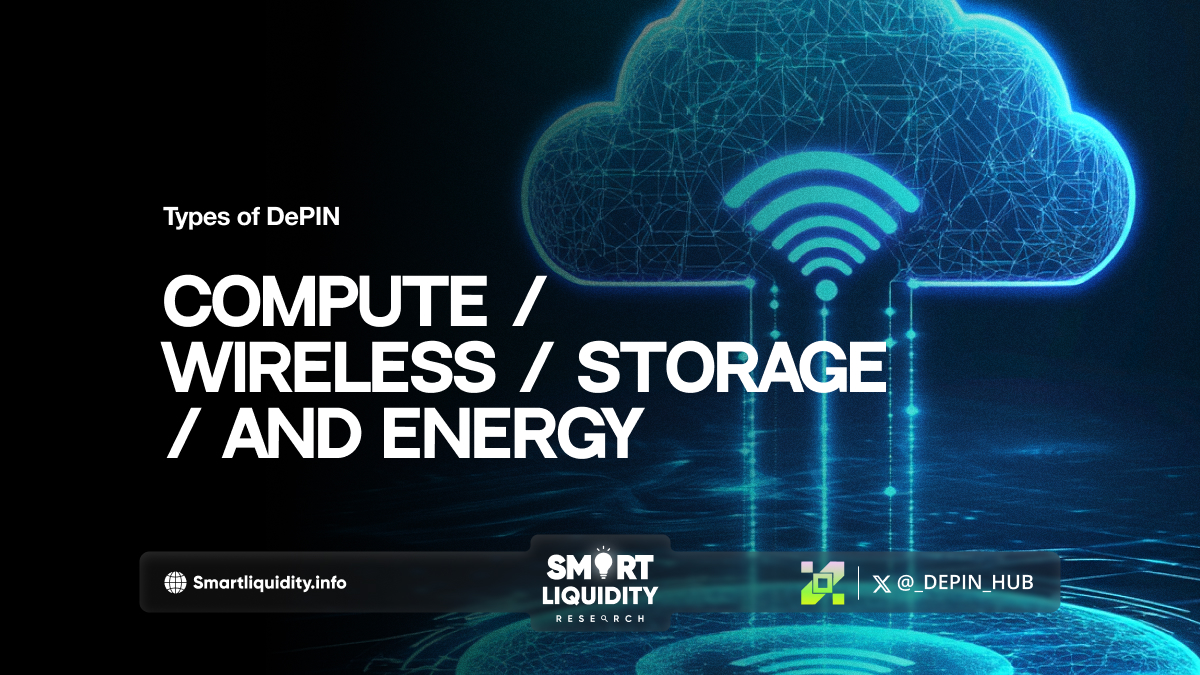Types of DePIN: Compute, Wireless, Storage, and Energy


Exploring DePIN: Compute, Wireless, Storage, and Energy Networks
Decentralized Physical Infrastructure Networks (DePINs) represent a transformative approach to building and managing physical infrastructure by leveraging blockchain technology and token-based incentives. These networks empower individuals and organizations to collaboratively develop and operate various infrastructure types, enhancing efficiency, accessibility, and resilience. DePINs can be broadly categorized into four primary types: Compute, Wireless, Storage, and Energy networks.
1. Compute Networks
Compute DePINs focus on decentralizing computational power. Participants contribute unused processing resources, such as CPU and GPU power, to a distributed network. This collective pool supports tasks like artificial intelligence model training, scientific simulations, and 3D rendering. Projects like NodeGoAI exemplify this model by enabling users to monetize idle computing resources, thereby fostering a peer-to-peer ecosystem for high-performance computing applications. citeturn0search12
2. Wireless Networks
Wireless DePINs aim to democratize telecommunications by allowing individuals to deploy and manage network infrastructure. Participants set up devices such as hotspots or small cell stations, contributing to a decentralized wireless network. In return, they earn tokens for providing connectivity services. The Helium Network is a notable example, where users establish wireless hotspots to offer long-range connectivity for Internet of Things (IoT) devices, receiving cryptocurrency rewards for their participation. citeturn0search1
3. Storage Networks
Storage DePINs decentralize data storage by enabling users to share excess disk space. This approach enhances data redundancy and security while reducing reliance on centralized servers. Participants earn tokens by offering storage capacity to the network. InterPlanetary File System (IPFS) is a prominent example, providing a peer-to-peer method of storing and sharing hypermedia in a distributed file system. citeturn0search15
4. Energy Networks
Energy DePINs focus on decentralizing energy production and distribution. Individuals contribute by generating renewable energy through solar panels or wind turbines and share the surplus with the network. This model promotes sustainable energy practices and reduces dependence on centralized power grids. Participants are rewarded with tokens for their contributions, fostering a community-driven approach to energy management. citeturn0search1
In summary, DePINs are revolutionizing how we conceive and manage physical infrastructure. By harnessing blockchain technology and community participation, these networks offer decentralized solutions across compute, wireless, storage, and energy sectors, paving the way for a more resilient and equitable infrastructure landscape.
DISCLAIMER:
“The information provided on this platform is for general informational purposes only. All information on the platform is provided in good faith; however, we make no representation or warranty of any kind, express or implied, regarding the accuracy, adequacy, validity, reliability, availability, or completeness of any information on the platform.”




